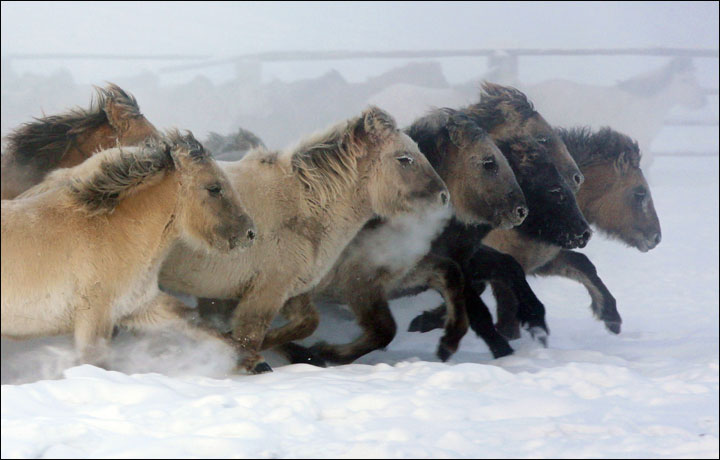
Posted on 11/29/2015 7:27:04 PM PST by TigerLikesRooster
Fast track evolution as great Siberian symbol is surprisingly unmasked as an immigrant breed.
Researchers say these horses, which seem so well attuned to the harsh cold with thick, dense winter coats, their armour against temperatures of minus 70C (minus 94F), are incomers that only arrived in these parts within the last 800 years. Picture: Maria Vasilyeva
The resilient Yakutian horses are one of the great native sights of the Sakha Republic - or Yakutia. In their way as much a part of the classic Siberian scenery as permafrost, extinct woolly mammoths, diamonds and Laika dogs in this kingdom of cold. Except that these horses are not really native.
Fascinating new scientific research has found that their seemingly built-in protection against extreme Arctic conditions is a recent phenomenon, at least by the normal tortoise-paced standards of evolution.
Researchers say these horses, which seem so well attuned to the harsh cold with thick, dense winter coats, their armour against temperatures of minus 70C (minus 94F), are incomers that only arrived in these parts within the last 800 years. Yet during that time, the requirement to survive has seen a quick-fire - almost overnight in relative terms - evolution by this species of horse.
Moreover, there was indeed a breed of horses native to this vast area of Russia, in which lie the coldest permanently inhabited communities on the planet. But these true native horses became extinct, at roughly the same time as the woolly mammoth and rhinoceros also died out, finally disappearing around 5,000 years ago.
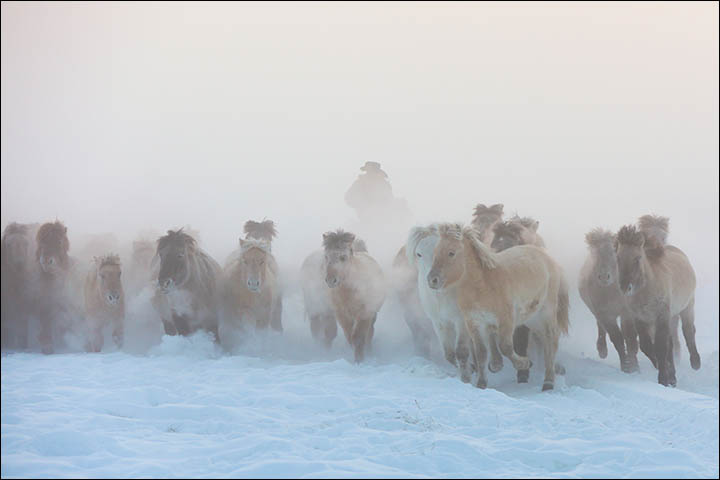
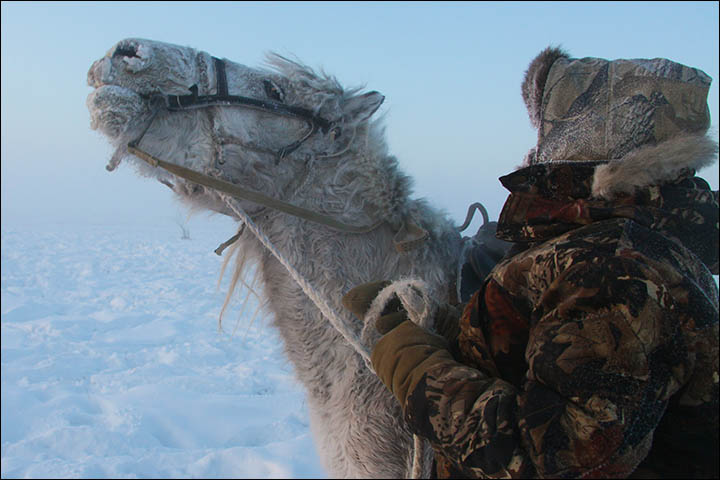
'This is truly amazing as it implies that all traits now seen in Yakutian horses are the product of very fast adaptive processes.' Pictures: Maria Vasilyeva
It transpires that a human population migrating within the last millennium to this land of ice - probably from Mongolia - brought horses with them, and these are the ancestors of today's distinctive Yakut horses, shown in our pictures.
'This is truly amazing as it implies that all traits now seen in Yakutian horses are the product of very fast adaptive processes, taking place in about 800 years,' explained Dr Ludovic Orlando, leader of an international team of scientists.
'This represents about 100 generations for horses. That shows how fast evolution can go when selective pressures for survival are as strong as in the extreme environment of Yakutia.'
The forebears of today's hardy horses are the domesticated stock of Mongolia, not the wild horses known to have roamed Yakutia in ancient times, a species that remains today only in fossil form. Yet these migrant horses were central to the lives of the population that settled in Yakutia: had these animals not coped with, and thrived on, the cold, these human societies would not have survived.
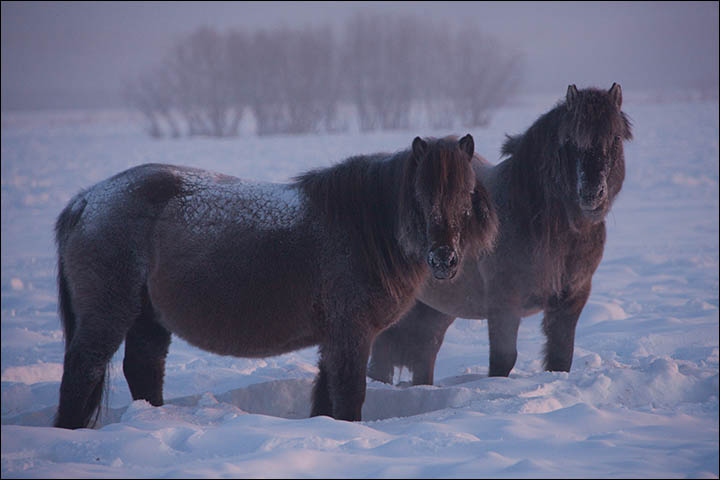
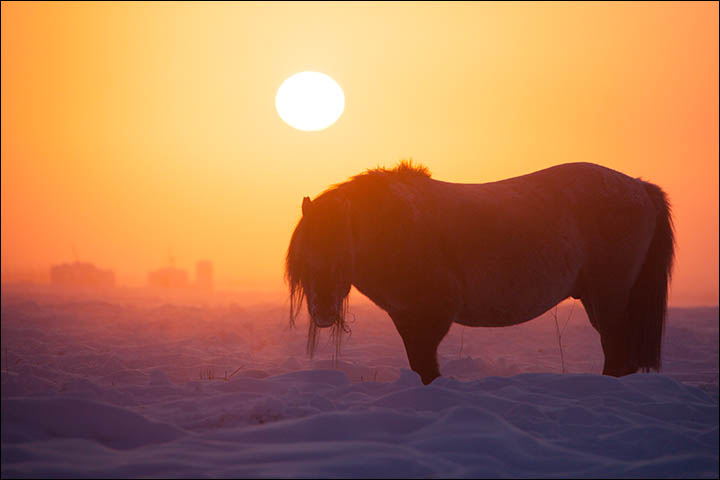
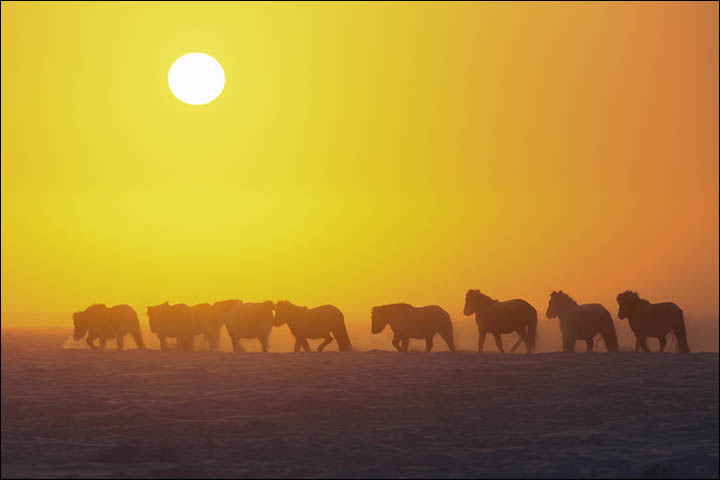
'In the genome of the Yakutian horses, we found the mutations that help the adaptation: revealed genes involved in the development of hair, affecting the body size, metabolic and hormonal signaling ways.' Pictures: Maria Vasilyeva
'We know now that the extinct population of wild horses survived in Yakutia until 5,200 years ago,' he said. 'It extended from the Taymir peninsula to Yakutia, and probably all across the entire Holarctic region. In Yakutia, it may have become extinct prior to the arrival of Yakut people and their horses. Judging from the genome data, modern Yakutian horses are no closer to the extinct population than is any other domesticated horse.'
The research pinpointed the genes responsible for this supersonic evolution, finding similarities with both indigenous Siberian people and even woolly mammoths. Among them TGM3, involved in hair development, which may be responsible for the Yakutian horse's distinctive shaggy look, a key to shielding them from cold living outside all year round. The adaptations, many of them regulatory, also involved vasoconstriction, body size, hormones, and metabolism.
Researcher Dr Pablo Librado said: 'In addition to unveiling their evolutionary origins, our approach helped narrow down the genetic basis of adaptations that are unique to Yakutian horses. In one word, their genetic makeup.
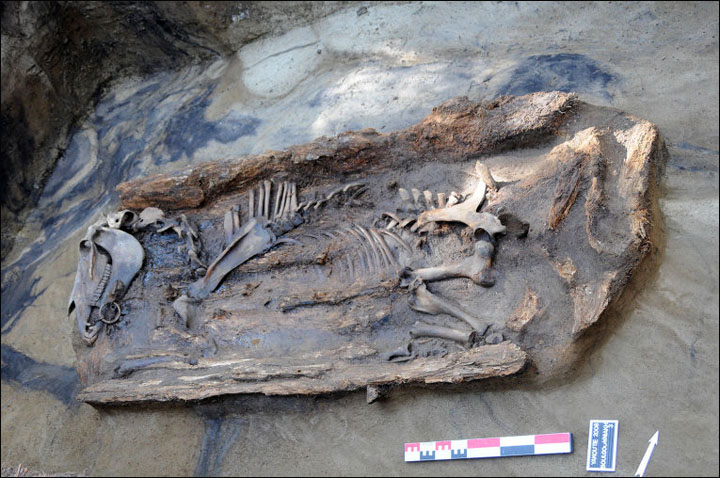
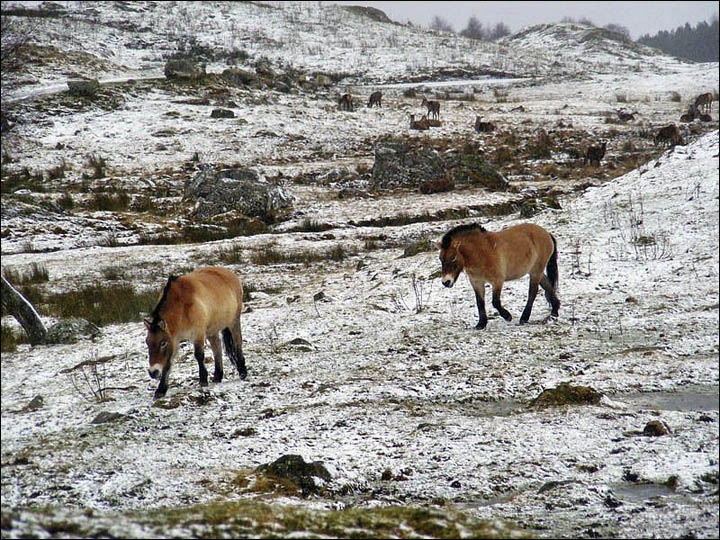
The geomes of modern-day horses and ancient horse samples from this region were compared to one another, and to existing sequences for dozens of domestic, still-wild Przewalski's, and ancient horses. Pictures: Patrice G/Proceedings of the National Academy of Sciences, floato
'We also found genes that were reported to have undergone selection in other Arctic populations, such as indigenous Siberian humans, and even the woolly mammoth. It provides a compelling example of evolutionary convergence, where unrelated groups exposed to similar environments end up independently developing similar adaptations.'
The research included genome sequencing on nine modern-day Yakutian horses, plus two ancient horse samples from this region, one from the early 19th century, and another 5,200 years old.
The genomes were then compared to one another, and to existing sequences for dozens of domestic, still-wild Przewalski's, and ancient horses. As for the earlier, extinct horses in this region, for example as seen in ancient remains on the Taymyr Peninsula, bore no close relationship to today's Yakutian horse population, and no more than to any modern breeds.
'The population from the Taymyr peninsula does not coincide with anything that paleontologists have ever described,' said Dr Orlando. This group is estimated to have diverged from the modern horse lineage around 160,000 years ago, the researchers estimate. They were as diverged from modern horses as humans are from Neanderthals, he said.

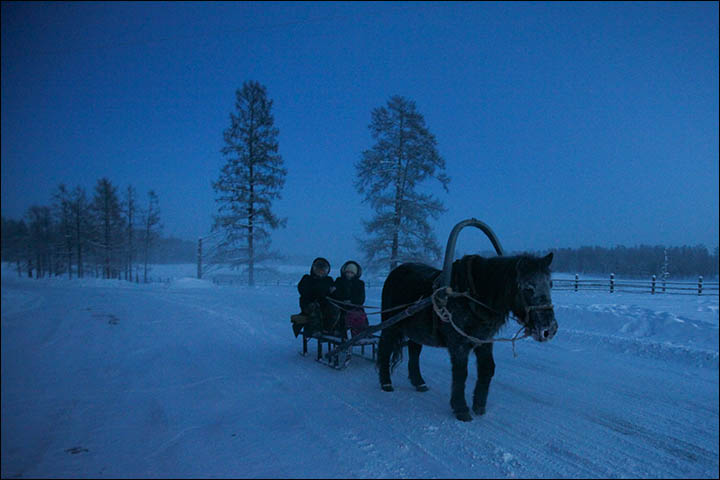
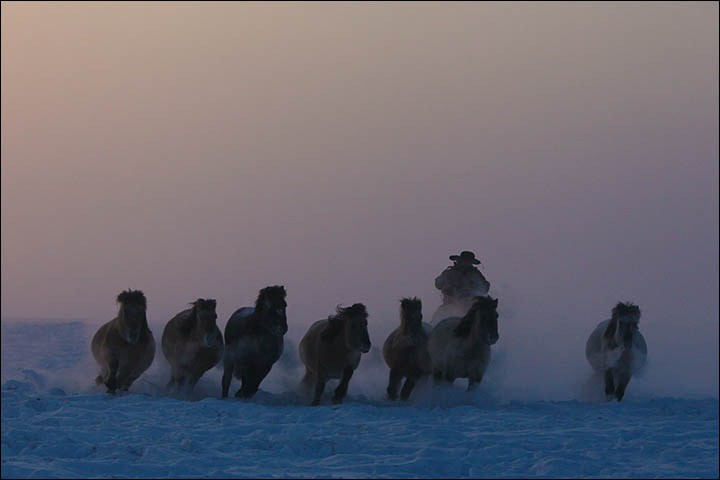
Yet these migrant horses were central to the lives of the population that settled in Yakutia: had these animals not coped with, and thrived on, the cold, these human societies would not have survived. Pictures: Maria Vasilyeva
Russian scientist Artem Nedoluzhko, head of the Laboratory of Bioinformatics and Genomics Research of Kurchatov Institute, in Moscow, who was involved in the research, said: 'We have shown that the Yakutian horse is one of the fastest cases of adaptation to the extreme Arctic temperatures.
'In the genome of the Yakutian horses, we found the mutations that help the adaptation: revealed genes involved in the development of hair, affecting the body size, metabolic and hormonal signaling ways. The changes found in the genome of Yakutian horses are an essential part of the adaptive genetic tools of the body.
'In addition, we found evidence of convergent evolution of the Yakutian horse with human populations that live in Siberia and mammoths, suggesting the existence of multiple evolutionary strategies needed to survive in extreme climatic conditions.'
Dr Orlando is from the Centre for GeoGenetics at the Natural History Museum of Denmark, part of the University of Copenhagen. Findings were published in the Proceedings of the National Academy of Sciences of the USA.
I am no genetic scientist, but my studies have revealed that geneticists have never witnessed a beneficial mutation. Therefore the growth of hair in this species is natural variation, not mutation, and therefore not evolution!
Horses, like bison, evolved on the plains that existed in front of the ancient ice sheets.
The optimum comfort temperature for horses is 40 degrees. They are an animal of the ice age.

A distinction without a difference.
Those pictures are so cold I got hypothermia just looking at them.
Think about that comment...
There’s no difference between humans culling out the ones less adapted to cold or the cold achieving it on its own...
Life is adaptable.
Wil...Burrr!

Adaptation is a step to long range evolutionary mutation
so, on a macroscale, adaptation is evolution
Evolution is adaptive change
Evolution is defined as increasing complexity of an organism through mutation. When you switch a few genes off or on you aren’t adding any information therefore no evolution has occurred.
Which is the application over time of adaptive changes
When you have no additional complexity added to an organism you can’t call it evolution. If you add more genes you add more complexity and then you can call it evolution.
Mongolia is fairly warm/hot in the summer, and rather cold in winter. But you’ve sidestepped my point.
These “scientists” make a big deal over these ponies becoming acclimated to the cold weather over 800 years. When it’s fairly obvious that if they hadn’t adapted in their first winter in the extreme cold, they’d all have died, and we’d be refering to them in the past tense.
Evolution, schmevolution! It’s adaptation, and God’s creatures do it all the time. They were created that way.
Well played!
“There’s no difference between humans culling out the ones less adapted to cold or the cold achieving it on its own...”
Sure there is. Is there a difference between someone punching you in the face and you accidently walking into a door? You might end up with a black eye either way, but the ramifications of the two different acts are enormous. Nature taking its course is one thing, but human beings deliberately manipulating the bloodline in animals to produce a better horse (one better suited to the extreme local environment) is an entirely different kettle of genetically altered fish. First of all, it implies that there was a very deliberate plan that was to be carried out not only over many generations of horse lives, but over some generations of human lives. That shows a level of planning and commitment that is nothing short of astounding in an illiterate, isolated group of people living what are essentially little better than stone age lives. Then there’s the realization that this means whoever did this understood exactly what it was doing, knew how to evaluate what was working and what was not, and so on. We do this today, but we understand genetics. They did this without any scientific understanding of genetics at all.
It you assume (and you know what happens when one assumes) that the Siberian horsed evolved in the MIDDLE of Siberia, not by encroaching on the not quite as bitter margins a little every year, the better adapted ones moving into the areas where they had less competition, i.e. to the colder regions they could tolerate where the others couldn’t.
Look how fast the human race spread just from the desire to get away from the gossips and oppressive chieftains!
Disclaimer: Opinions posted on Free Republic are those of the individual posters and do not necessarily represent the opinion of Free Republic or its management. All materials posted herein are protected by copyright law and the exemption for fair use of copyrighted works.